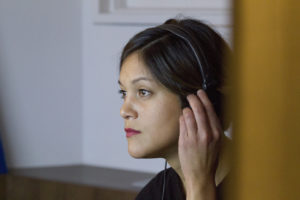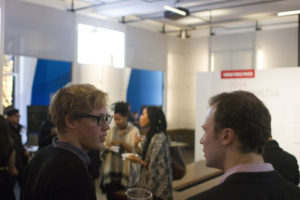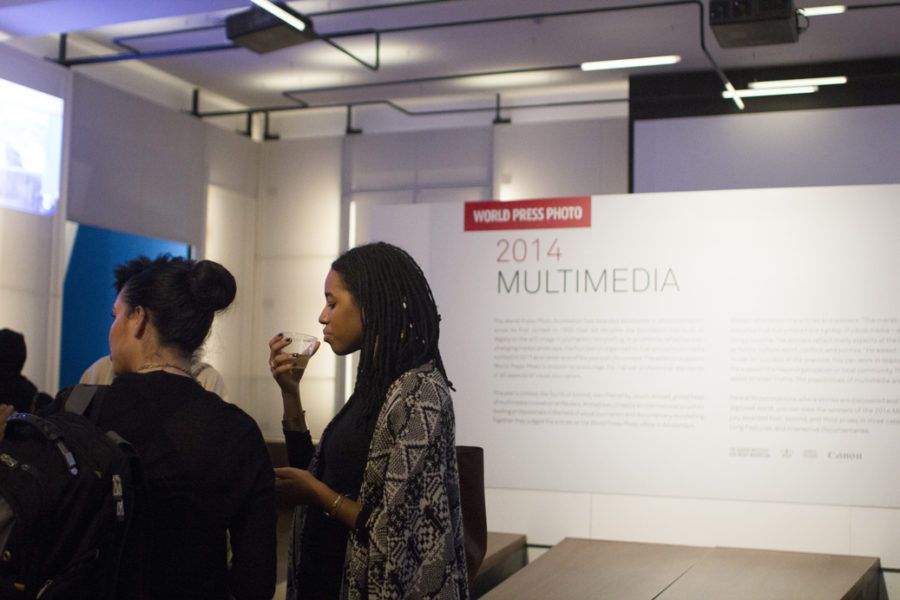From December 12-19 (Monday-Friday) and again from January 19-February 6 (again, Monday-Friday), the Brown Institute at Columbia will host the 2014 World Press Photo Multimedia Award Winners. The institute has been transformed into an exhibition space, featuring six award winning films, three interactive documentaries, and a selection of famous WPP phographs. The features showing during this period are inspiring, captivating, compelling works of filmmaking.
Witnessing Gezi, 1st prize, Long Feature: Witnessing Gezi’ was created with the recordings of photojournalist Emin Özmen who witnessed the protests against the urban development plan for Istanbul’s Taksim Gezi Park.
Hers to Lose, 2nd prize, Long Feature: Christine C. Quinn, once the front-runner in the New York mayoral race, lost in the Democratic primary. A behind-the-scenes film captures the campaign’s final month.
Swan Song, 3rd prize, Long Feature: When Marilyn is diagnosed with dementia at age 58, her daughters refocused their lives to care for her during her most precious years.
Staff Riding, 1st prize, Short Feature: ‘Staff riding’ is local slang for train surfing, and it is a widespread phenomenon in South Africa.
Silent Night, The Kandahar Massacre, 2nd prize, Short Feature: The Kandahar Massacre is considered the most severe war crime by a member of the U.S. Armed Forces since the Vietnam War. In the early morning hours of 11 March 2012, U.S.
Calcio Storico, 3rd Prize, Short Feature: The Calcio Fiorentino is an early form of football, originally played only by the aristocracy.

The three interactive documentaries on display during this time represent the very best in interactive story telling:


A Short History of the Highrise, 1st prize, Interactive Documentary: ‘A Short History of the Highrise’ is an interactive documentary that explores the 2,500-year global history of vertical living and the issue of social equality in an increasingly urbanized world.
NSA Files: Decoded, 2nd prize, Interactive Documentary: In a series of investigative stories based on top-secret National Security Agency (NSA) documents leaked by former intelligence analyst Edward Snowden, The Guardian US revealed the vast scale and scope of domestic and international surveillance programs, the close relationship between technology companies and intelligence agencies, and how technology is leading to widespread, indiscriminate and routine mass collection of telephone and internet data of millions of people.
Hollow, 3rd prize, Interactive Documentary: ‘Hollow’ is an interactive documentary and community participatory project that examines the issues of shrinking in rural North America through the eyes and voices of those living in McDowell County, West Virginia.

On December 11, the institute also hosted an opening event, inviting journalists, phogotraphers, filmmakers, documentarians, deisgners and students and faculty from the Columbia Journalism School to celebrate this amazing collection of work. The evening included three short talks: Brian Storm (the founder and executive producer of Media Storm and 3rd prize winner for his long feature Swan Song) spoke on storytelling with video and the blurry line between documentary and advocacy; Gabriel Dance (managing editor of The Marshall Project and 2014 Jury member and 2014 2nd prize winner for his interactie documentary on the NSA files) questioned just what constitutes interactivity; and Adnaan Wasey (executive producer at POV Digital and 2015 World Press Photo Multimedia Jury Member) challenged the audience to think about how new technologies are expanding the field of journalism and what we might consider to be a story.
Finally, the exhibition of World Press Photos, a sampling of some of their best images from the last three decades, is installed on the two large grids of screens that line the entrance to the institute space. It represents the first time we’ve used these areas for an exhibition and the images look stunning. Given this success, the institute will sponsor a regular photo competition for J-School students to show their work, and will invite curated shows of videos and photos by our faculty.
The Brown Institute is proud to support this incredible body of work and would like to thank Micha Bruinvels, Paul Ruseler and Casper Shipper for bringing this exhibition to Columbia.

